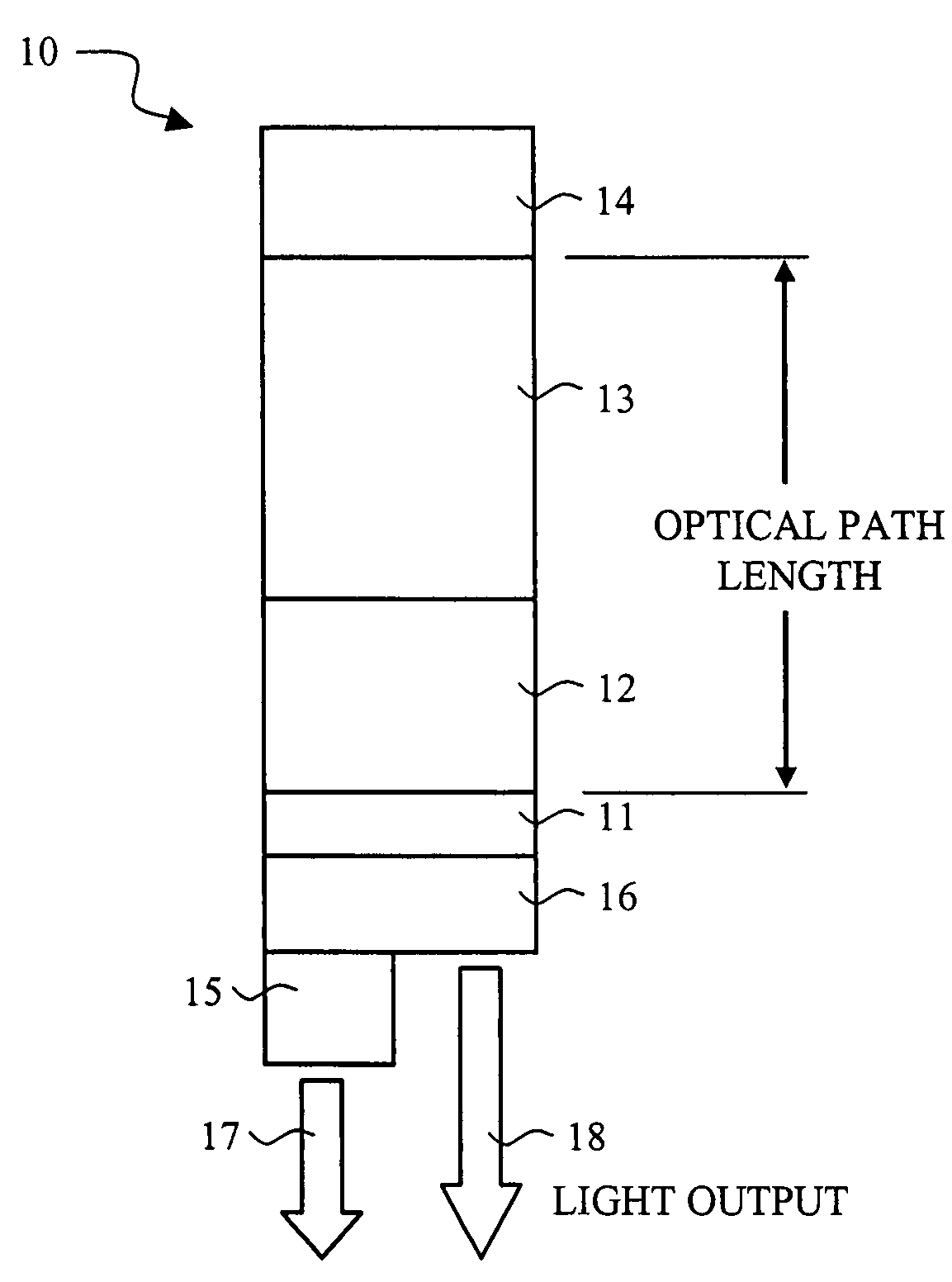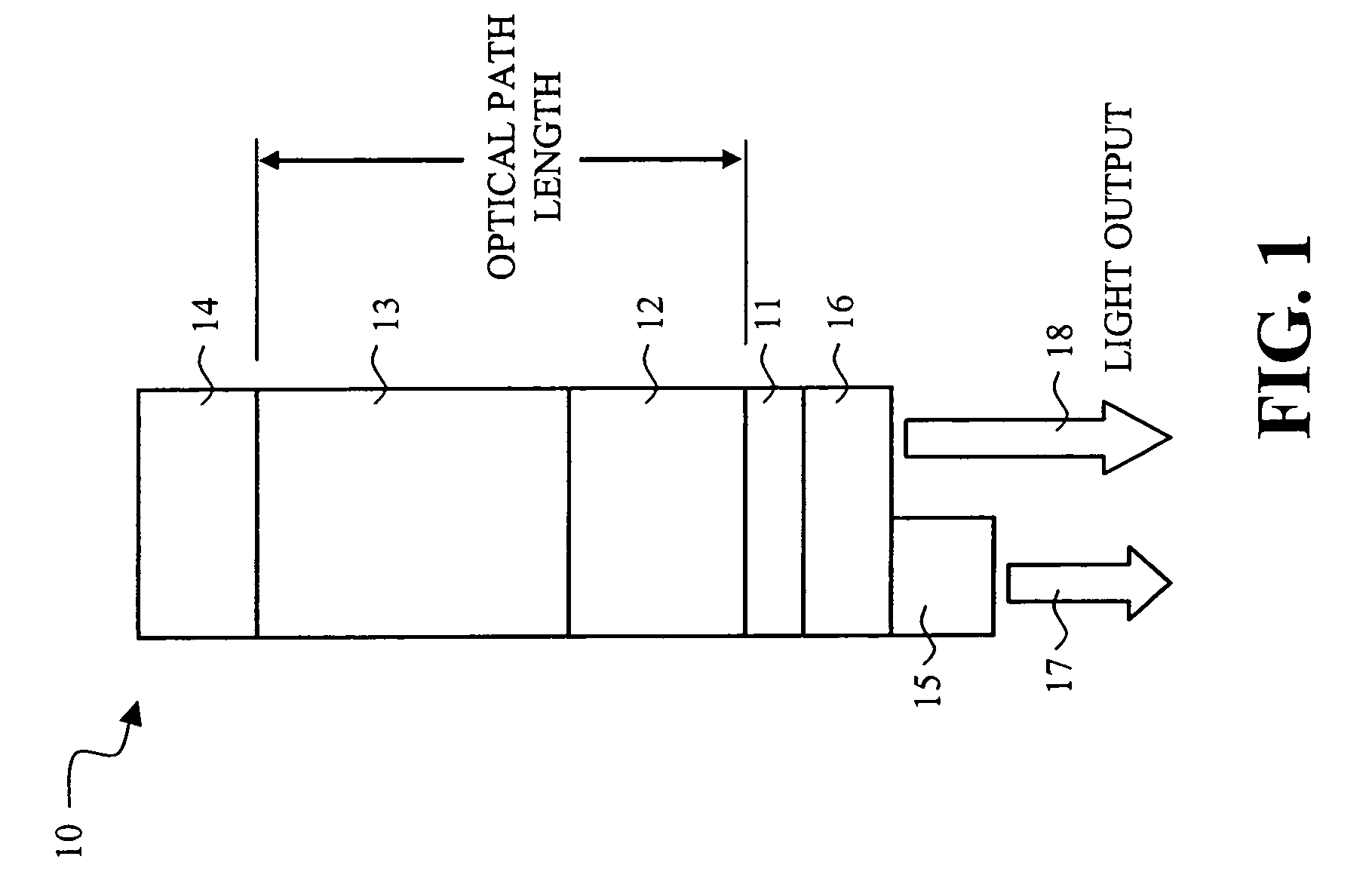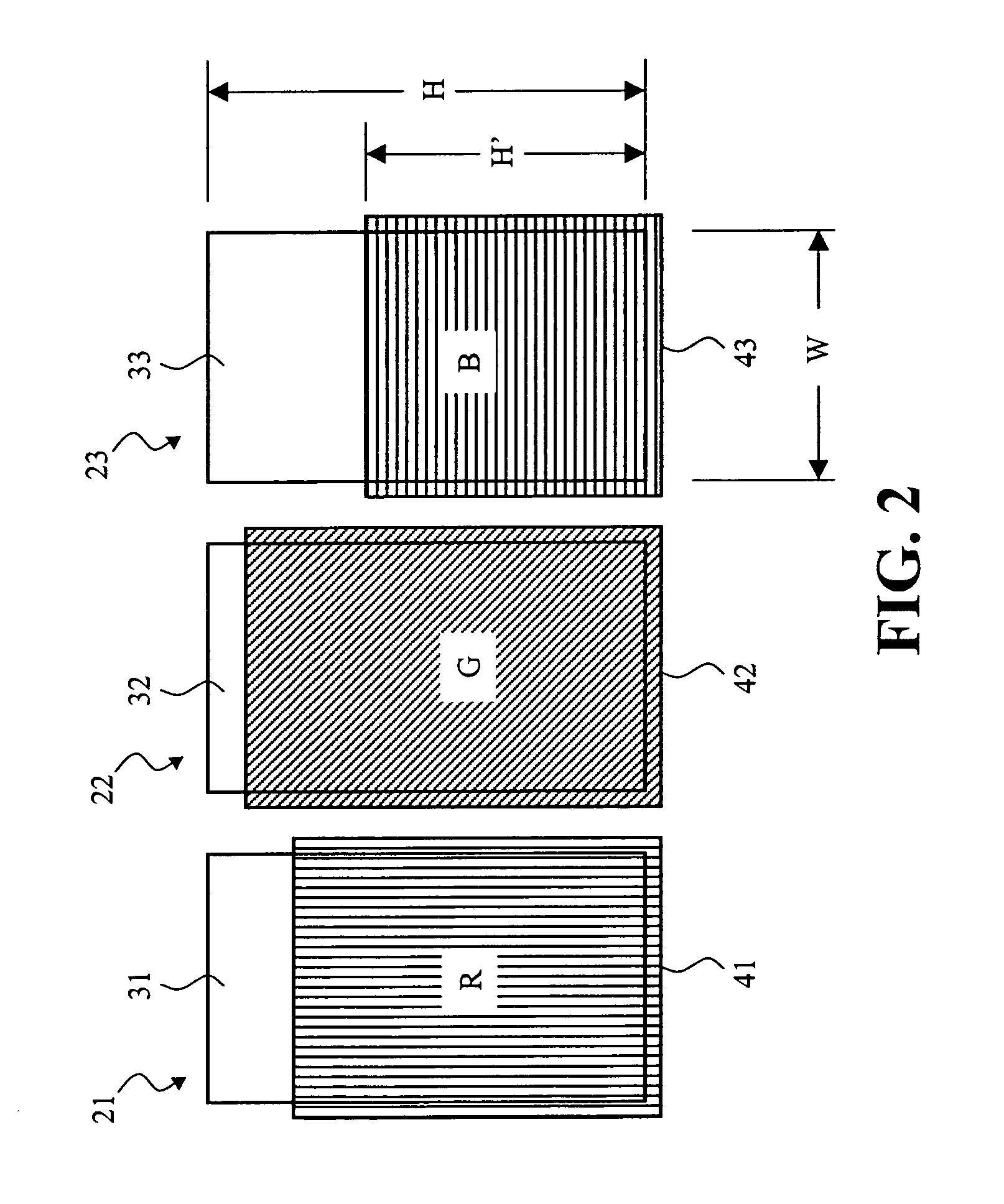Oled microcavity subpixels and color filter elements
a microcavity and subpixel technology, applied in the direction of discharge tube luminescnet screens, discharge tube/lamp details, electric discharge lamps, etc., can solve the problem of color change of emission, and achieve the effect of reducing the apparent color shi
- Summary
- Abstract
- Description
- Claims
- Application Information
AI Technical Summary
Benefits of technology
Problems solved by technology
Method used
Image
Examples
example
[0030]The present invention is explained more specifically with reference to the following example.
[0031]Three microcavity devices were prepared having a configuration as follows: a transparent glass substrate; a 20 nm Ag semi-transparent reflector; a 100 nm A1 reflector; a plurality of organic layers with a refractive index of approximately 1.8; and no cavity spacer layer. In the first device, the total thickness of the organic layers was 296 nm. This thickness was selected so as produce a microcavity structure optimized to enhance emission in the red wavelengths. In the second device, the total thickness of the organic layers was 254 nm. This thickness was selected so as produce a microcavity structure optimized to enhance emission in the green wavelengths. In the third device, the total thickness of the organic layers was 219 nm. This thickness was selected so as produce a microcavity structure optimized to enhance emission in the blue wavelengths.
[0032]FIGS. 4A through 4C illust...
PUM
 Login to View More
Login to View More Abstract
Description
Claims
Application Information
 Login to View More
Login to View More - R&D
- Intellectual Property
- Life Sciences
- Materials
- Tech Scout
- Unparalleled Data Quality
- Higher Quality Content
- 60% Fewer Hallucinations
Browse by: Latest US Patents, China's latest patents, Technical Efficacy Thesaurus, Application Domain, Technology Topic, Popular Technical Reports.
© 2025 PatSnap. All rights reserved.Legal|Privacy policy|Modern Slavery Act Transparency Statement|Sitemap|About US| Contact US: help@patsnap.com



